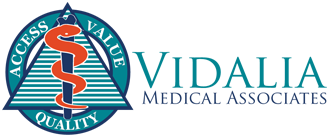One very important part of managing hypertension is monitoring blood pressure. Patients have their blood pressure checked at each office visit with their doctor, but taking their own blood pressure at home can be very beneficial. Treatments and medication changes may be made based on these results. There are several things to think about when considering home blood pressure monitors.
Picking The Best Monitor For You
Select a cuff that fits comfortably. You should be able to slide one finger under the cuff and the lower edge should be one inch above your elbow. Purchasing the correct size cuff is very important for accurate measurements.
A normal adult cuff fits an arm circumference of 9-13 inches.
A large cuff fits an arm circumference of 13-17 inches.
Select the type that best suits your needs:
Automatic arm cuff- fits around the upper arm and automatically inflates
(this type is most recommended)
Manual arm cuff- reading automatically displays, but you must be able to inflate the
cuff by pumping a bulb.
Wrist monitors- very convenient, but are usually more expensive and less accurate.
Fingertip monitors- considered less reliable than other models.
Other things to consider: is the digital display large enough for you to read easily? Does the machine have the ability to store blood pressure values in its memory or will you need to keep these records.
Before Taking Your Blood Pressure
You want to sit quietly for a few minutes before taking a blood pressure.
Sit up straight with feet flat on the floor. Do not cross your legs or your ankles.
Wait at least half an hour after eating, drinking caffeinated drinks, smoking, or exercising in order to get the most accurate reading.
Taking Blood Pressure
Roll up the sleeve on your arm or remove any tight-sleeved clothing.
For arm models rest your arm on a table with your palm facing upwards. For wrist models keep your wrist level with your heart.
Avoid talking while taking your blood pressure.
May repeat blood pressure after a few minutes.
It is important to check the blood pressure readings from your home machine with your physician at least once or twice a year, or more frequently if the machine is dropped or if blood pressure readings change suddenly.
What Blood Pressure Numbers Mean
The readings from the blood pressure machine indicated how hard your heat is working to pump blood.
The top number (systolic pressure) indicates the pressure while the heart pumps.
The bottom number (diastolic pressure) indicates the pressure between heartbeats.
The goal is to have blood pressure below 120/80.
